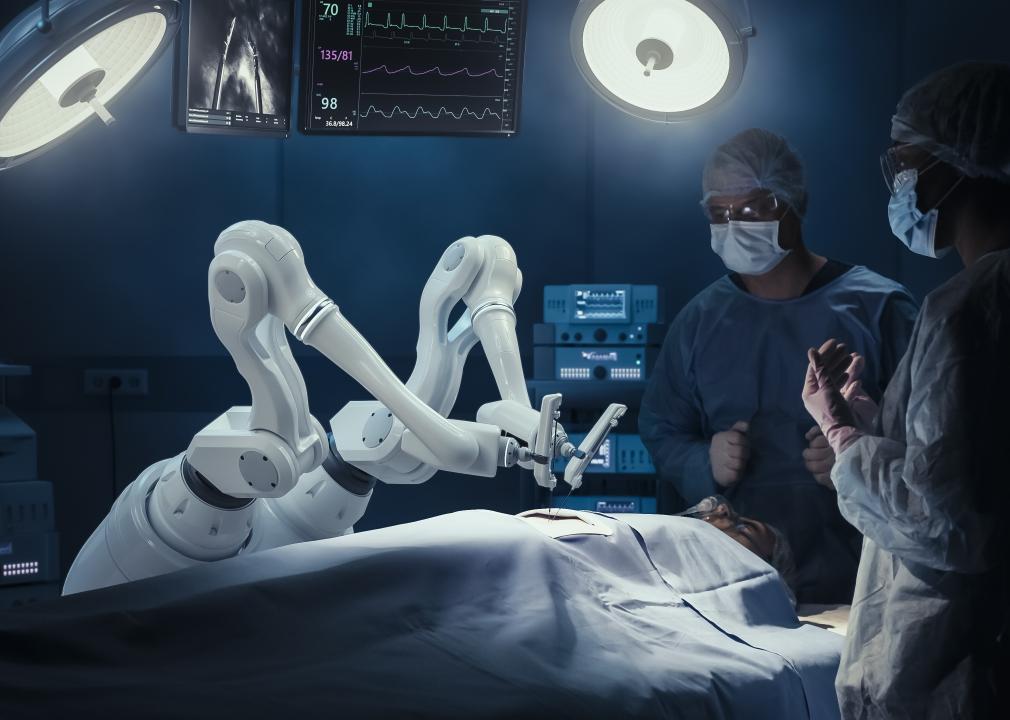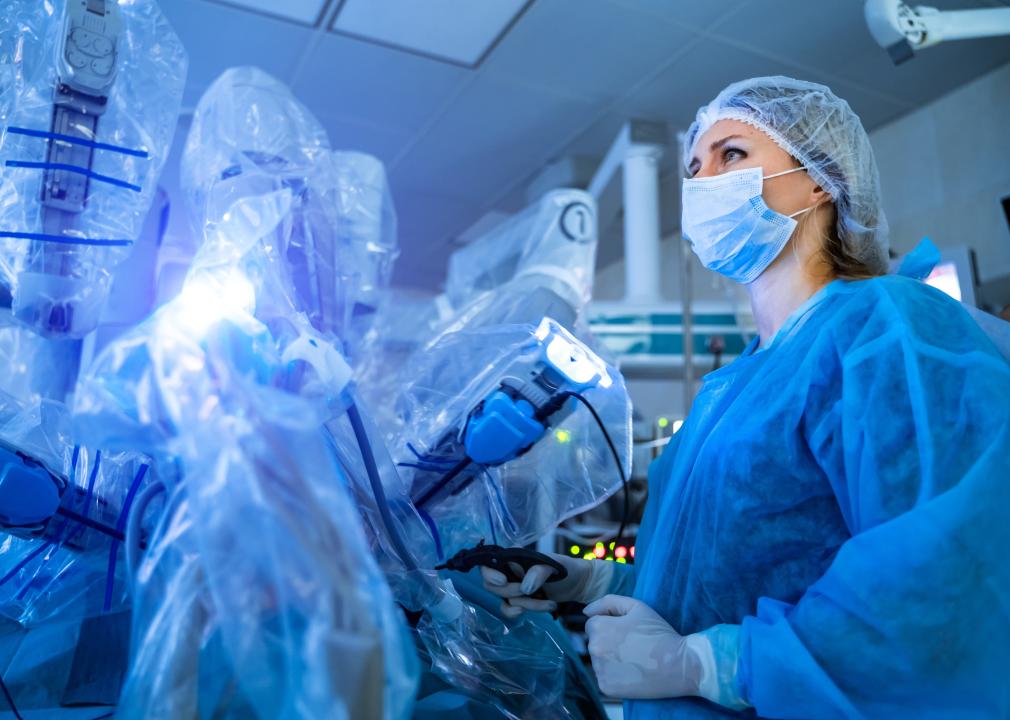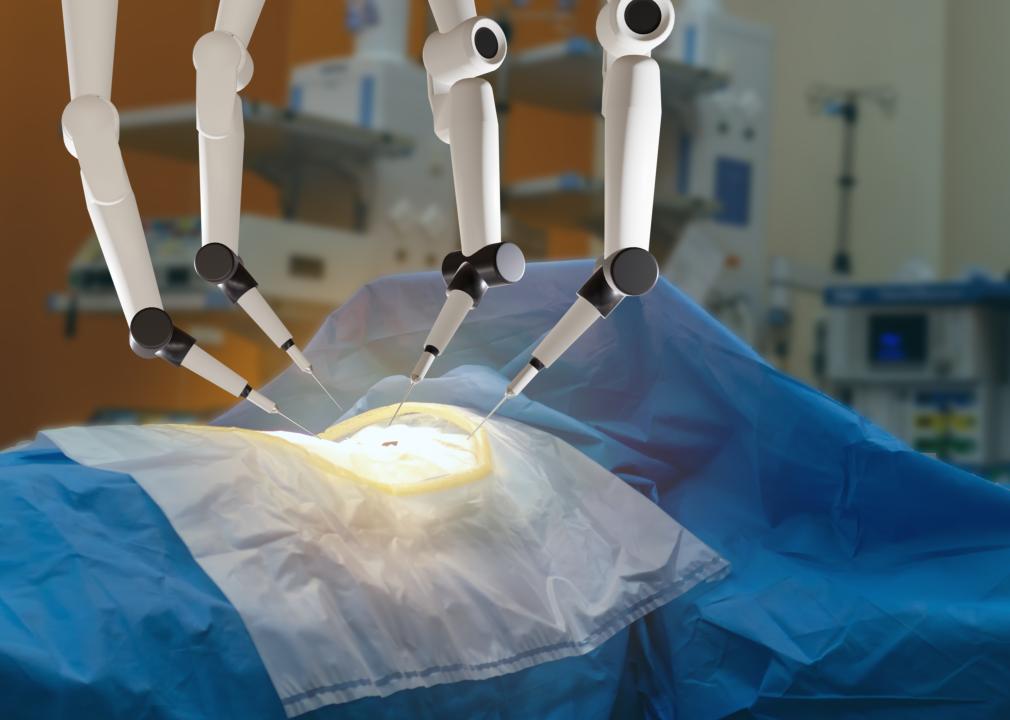Robotic surgery is evolving. Here's what that means for patients.
Gorodenkoff // Shutterstock
Robotic surgery is evolving. Here’s what that means for patients.
Two surgeons observing a robotic arm during operation.
A medical team made history in September by performing the first fully robotic heart transplant at the King Faisal Specialist Hospital & Research Centre in Riyadh, Saudi Arabia. Doctors spent two and a half hours controlling machines to replace the heart of a 16-year-old patient. The hospital claims the operation was less invasive than traditional heart surgeries, meaning the patient would feel less pain, be at less risk, and recover more quickly.
Surgical procedures often require a high degree of precision, which can be challenging even for experienced surgeons. The precision of machine-augmented surgery has the potential to greatly reduce the risks of medical procedures, where even small human errors can have serious consequences. More than 250,000 Americans are estimated to die annually due to medical errors, according to a Johns Hopkins study published in 2016. These errors include surgical mishaps, incorrect medications, and wrong diagnoses.
Robots have been used to assist in surgeries since the 1980s, with a growing number of medical practitioners around the world leveraging the technology. Recent advances in artificial intelligence are now accelerating progress in this field, potentially expanding the capabilities and applications of robotic surgical assistants. Medical Technology Schools analyzed news reports and academic research to explore the evolving world of robotic surgeries.
![]()
Terelyuk // Shutterstock
Surgery is gradually becoming more mechanized
Surgeon using a modern robotic surgical system.
In 1985, doctors used the PUMA system to perform neurosurgical biopsies, taking samples of peoples’ brains so doctors could study tumors—an inherently risky procedure. In 1998, the da Vinci premiered, eventually establishing itself as the most popular robotic surgery platform. That year, it was used in Leipzig, Germany, to perform heart surgery in a much less invasive way than operations done purely by hand.
The 1990s also saw the development of remotely operated robotic surgery systems, which allowed doctors to operate on patients from a distance. One such design was the Medical Forward Area Surgical Team, a robotic surgery system funded by the Department of Defense. MEDFAST could be mounted into an armored vehicle and driven to the front lines to allow for a virtual telesurgical procedure.
Sophisticated advances in this technology continue, from high-definition 3D visualization to improved dexterity and motion scaling. New machines bring even more features, including tables that rotate so doctors can reposition patients during surgery; and fluorescence imaging that uses specialized dyes and lighting to help doctors identify body features such as veins and organs.
MONOPOLY919 // Shutterstock
Artificial intelligence is coming
Closeup of a robotic arm during surgery.
Medical technologists today are increasingly integrating AI into robotic surgery systems. These advancements involve real-time processing of data, such as providing surgeons with tactile feedback that simulates the sensation of tissue resistance. Modern AI systems also feature more state-of-the-art camera technology, capable of automatically zooming in and focusing on relevant anatomical structures. AI can also identify critical features like blood vessels and nerves, and even highlight areas where cancer cells are likely to be located.
Researchers are also actively working on developing nanobots, which will allow doctors to operate at the cellular level. These tiny robots are usually less than 1 micrometer across—about a third of the width of a single strand of spiderweb silk—and are designed to navigate through the bloodstream delivering drugs directly to cells. They could, for instance, deliver chemotherapy directly to sick cells without affecting healthy ones, greatly reducing the harm this medication does to people.
Technologies that were once the stuff of science fiction are coming sooner rather than later, even with their high cost and the additional training for surgeons the breakthroughs will require. In the long term, robotic surgeries are likely to actually lower costs by freeing up doctors’ time. Despite the growing capacity of these machines, however, they all still require human involvement—at least for now.
Story editing by Nicole Caldwell. Additional editing by Kelly Glass. Copy editing by Tim Bruns.
This story originally appeared on Medical Technology Schools and was produced and distributed in partnership with Stacker Studio.


